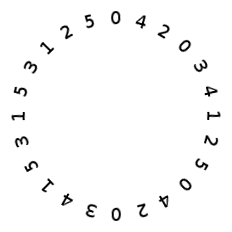Choose four distinct digits and arrange them into the largest and smallest numbers possible (e.g., 9751 and 1579). Subtract the smaller from the larger to produce a new number (9751 – 1579 = 8172) and repeat the operation.
Within seven iterations you’ll always arrive at 6174.
With three-digit numbers you’ll aways arrive at 495.


